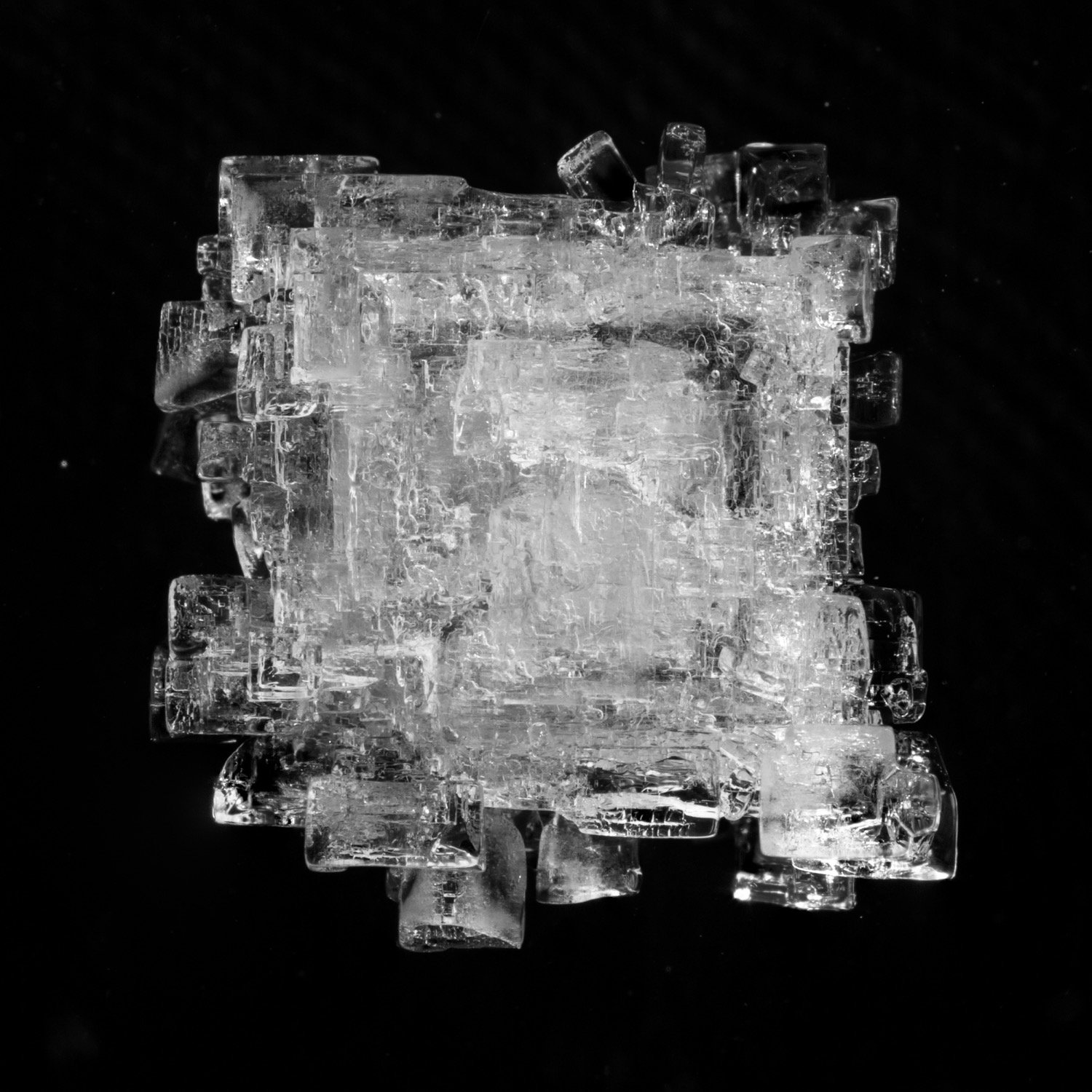Salt by Christine Lorenz
Issue 154
Salt is the commonest of common things. Essential as it is to human lives, salt finds its place in countless metaphors. We can taste it when we can’t see it, in our tears, on our skin; it makes us thirsty if we have too much. As a mineral in the world, it has a sort of life of its own. Left to its own devices, salt fluctuates between visible and invisible, organizing itself into structures and patterns, and dissolving again. Under ideal circumstances, the mineral settles into clean-edged structures that maintain clarity and precise right angles as they grow.
But circumstances are rarely ideal. Fluctuations in temperature or humidity, an occasional jostle, or pollution in the water will disrupt the crystal formation. Any state we witness is a moment from a process of becoming, and our own mutable nature is there, in crystals that never quite reach an ideal form.
All of the salt formations in the following photographs are composed of common table salt and water, boiled on the kitchen stove. The crystals are grown various surfaces including glass, ceramic, acrylic, and paper, and photographed using consumer-grade macro lenses and DSLR cameras. I use Photoshop for focus stacking and image cleanup; the subject matter is black and white in real life.
Christine Lorenz (she/her) lives and works in Pittsburgh.
www.cmlorenz.com | @zatopa
9205 (Dissolution), 2021
Dissolution
Crystal formations are temporary states. The way that pieces grow and adhere to each other, their size, surfaces, angles, degree of clarity--all the qualities that we see reflect the conditions that formed them to that point. This series shows a set that had been exposed to a solution that was less concentrated than the one they had come from, which caused them to immediately start dissolving. These crystals grew during 2020, and I started editing the photographs on January 6, 2021.
When I’m looking at these larger crystal formations in their states as they change over time, I’m thinking about perceptions of time, particularly as it relates to geological time. I see in them a process of striving for a state of perfection, at however glacial a pace, which can never be attained, and ultimately whatever state is achieved is itself transitory. The events of January 6 were a climactic moment signaling dissolution—but it was just one moment, and not even the biggest one I feel like we’re going through.
9223 (Dissolution), 2021
9370 (Dissolution), 2021
9397 (Dissolution), 2021
9412 (Dissolution), 2021
0125 (Dissolution), 2021
0137 (Dissolution), 2021
0155 (Dissolution), 2021
0173 (Dissolution), 2021
Fold 1032/9968, 2021
Salt, Folded
When crystals appear and grow in their solution, they seem to act independently, with a logic of their own. A photograph captures them in a temporary state, and puts a boundary around them. When we’re looking at photographs, the more we’re involved with the image, the more we forget that we’re looking at paper. Folding a photograph lets that paper stage an interaction between the images on either side, which are just two of the ways that the crystals could have turned out, and might yet next time.
Fold 2197/0510, 2021
Fold 3104/3038, 2021
Fold 4493/9686, 2021
Fold 9849/9843, 2021
Fold 9909/9979, 2021
Images © Christine Lorenz















